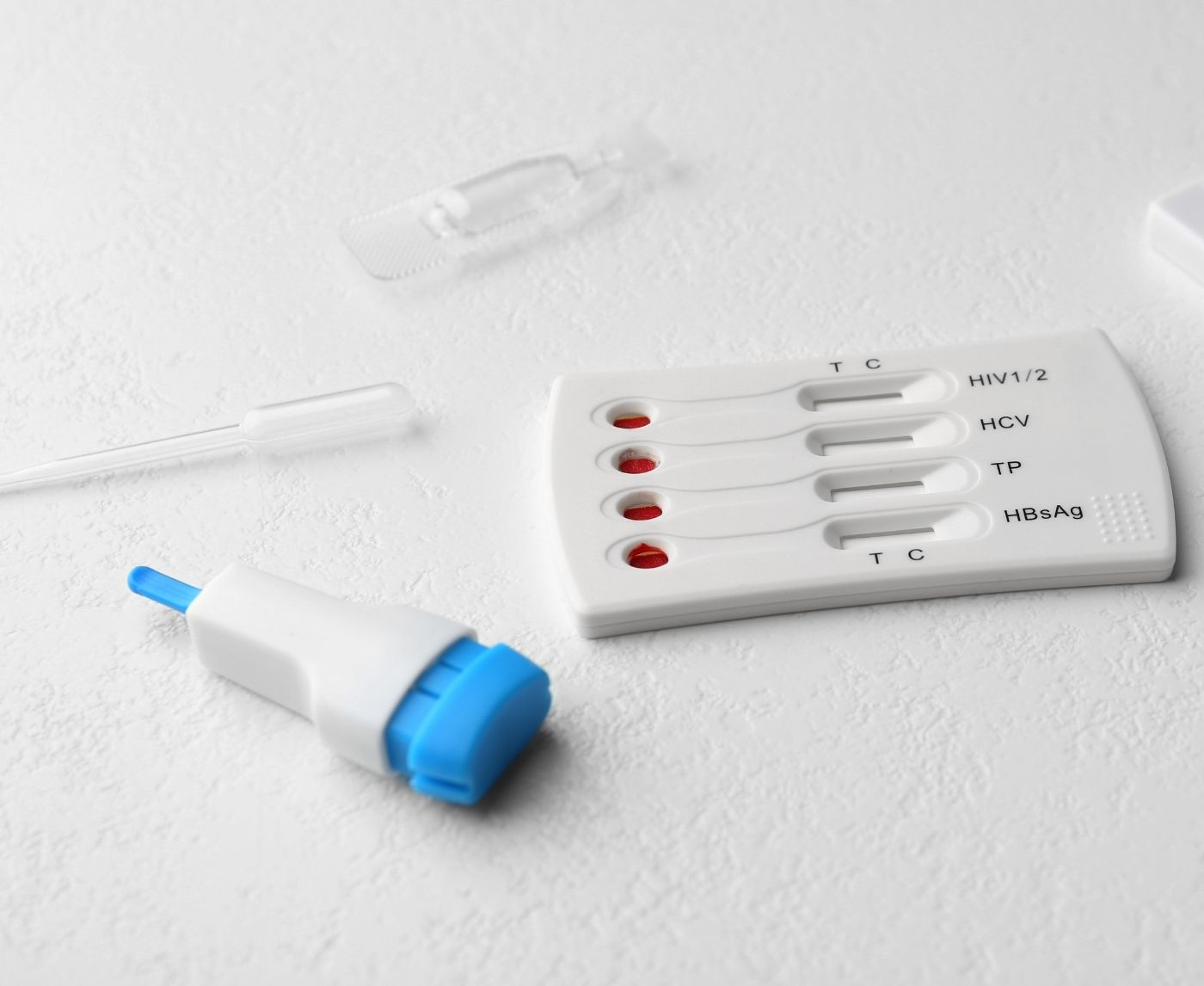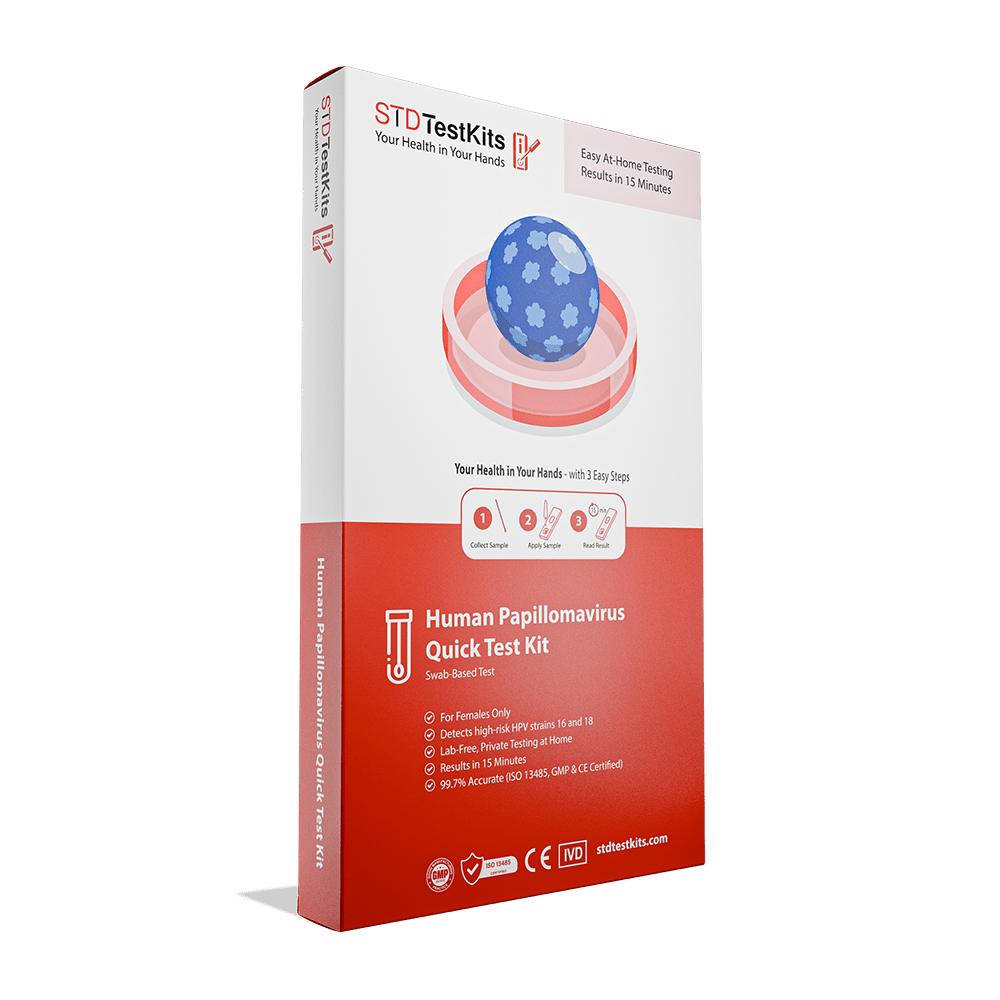Grindr Just Shipped Over a Million HIV Self-Test Kits, Here’s What That Means for You
Quick Answer: HPV rapid tests can miss early infections because the virus may not be present in detectable levels during the first few weeks after exposure. Timing and sample collection technique significantly impact accuracy.
What This Means for You (And Why It’s So Common)
If you've ever gotten a negative HPV test after a high-risk encounter, and then later tested positive, you’re not alone. Many people assume a negative test result is the end of the story. But when it comes to HPV, that’s often just the first chapter. The virus doesn’t behave like a simple invader. Instead, it slips into your skin or mucous membrane and begins replicating slowly. During those early days or even weeks, there might not be enough viral DNA present for a rapid test to detect.
This leads to one of the most common mistakes we see: testing too early. It’s tempting, especially when you're anxious, to grab a kit the morning after a risky hookup or just before seeing a new partner. But if the virus hasn't had time to establish itself, your result could be negative, even if you’ve been exposed.
Consider the case of Andre, 27, who ordered a rapid test after learning that his ex had tested positive for high-risk HPV. He swabbed two days later, got a negative result, and breathed easy. But months later, his new partner developed genital warts, and so did he.
“I didn’t understand how it could happen,” he shared in a forum. “I tested. I was negative. I thought I was in the clear.”
He wasn’t. He just tested too soon.

People are also reading: How Soon After Sex Can You Test for HSV-1 or HSV-2?
How HPV Rapid Tests Actually Work (Plain English Version)
Let’s break this down. HPV rapid tests typically detect the presence of viral DNA or antigens, pieces of the virus that show up in your body once the infection takes hold. Depending on the test, you might collect a sample using a vaginal swab, cervical brush, or oral rinse. These tests can be accurate, but they’re highly dependent on two things: the amount of virus present, and where the virus is replicating.
If the virus is still “incubating” in deeper layers of tissue, like in the cervix or tonsillar crypts, a surface-level swab might not pick it up. And even if you swab thoroughly, your sample might not capture enough viral particles for the test to react.
It's not that the test didn't work; it's that biology is limited. A study from 2023 that was published in the Journal of Clinical Virology found that rapid HPV tests are about 70–90% sensitive, depending on when and where the sample is taken. This means that some cases will not be caught.
Knowing how sensitivity and specificity work can help you set your expectations and lessen the shock if your test result doesn't match your later diagnosis.
Table 1: Sensitivity and specificity of HPV rapid tests reflect their ability to detect real infections, but early testing can reduce these values significantly.
Why Timing Changes Everything (The Window Period Effect)
HPV has an unpredictable incubation period. After exposure, it can take anywhere from 1 to 8 weeks for the virus to become detectable, sometimes longer for high-risk strains like HPV 16 or 18. During this “window period,” your body is silently processing the virus. It may not cause symptoms. It may not cause lesions. And it may not show up on your test.
That's the hidden risk, you feel fine, your test is negative, and you assume you're in the clear. But biologically, the virus could still be ramping up. This is especially true for oral HPV, where viral shedding happens inconsistently, and even more so for men, where there’s no FDA-approved HPV test, only off-label or research-grade kits used at home.
Sofia, 35, shared her experience:
“I took a home HPV test three days after an unprotected encounter. It was negative, but I kept having this gut feeling. Six weeks later, I went in for a Pap and HPV co-test, and it was positive for high-risk types. I felt like the first test lied to me, but now I get it, I was too early.”
Her story mirrors countless others. The science says: wait at least 3–6 weeks post-exposure for the most reliable results. Testing earlier is possible, but any negative result should be followed by a retest at the right window.
HPV Doesn’t Play Fair: When Special Cases Make Testing Harder
Most HPV guides focus on women with cervixes, because that’s where most of the screening guidelines live. But HPV doesn’t discriminate. It can infect the anus, mouth, throat, vulva, penis, and even under fingernails. And here’s the truth: testing in those locations is messy, inconsistent, and in many cases, not even FDA-approved. That’s not a failure of your body, that’s a gap in the system.
Take oral HPV. You can get it from giving oral sex, even once, or from deep kissing. But unless you’re in a research trial or a cancer monitoring program, there’s almost no standard test for detecting it at home or in clinics. Rapid tests for oral HPV exist, but they’re still niche and not always reliable. This means that if your partner has oral HPV, and you test with a genital swab, your result could be negative, even though you’ve both been exposed to the same virus.
HPV in men is another blind spot. There’s no routine screening, and no FDA-approved test for penile HPV. That leaves many men guessing, relying on symptoms that often never show up, or using unregulated rapid kits marketed as “for research only.” One study from the Journal of Infectious Diseases found that men who have sex with men had a 66% HPV prevalence rate, yet most had no idea they were infected.
Then there’s the group that often gets missed in both research and test design: people who are immunocompromised. Whether from HIV, chemo, chronic illness, or medication, suppressed immune systems can delay the body’s response to HPV, which means viral loads might stay low for longer, or fluctuate unpredictably. For them, a negative test doesn’t always mean a clean bill of health. Testing twice, spaced weeks apart, is often the safest move.
When (and Why) to Retest, Even If You Got a Negative
Here’s the most important takeaway from this guide: no single test can give you absolute certainty, especially in the early stages of HPV. The smart move? Retest, and do it based on timing, not anxiety.
Testing is like taking pictures. If you take a picture in the dark, it will be blurry and grainy. But if you wait for the light and the right time, the same camera will give you a much clearer picture. The same reasoning applies to testing for HPV. It's like shooting in the dark when you test before the virus is found. But if you test again during the peak window, you're more likely to get a clear read.
So, when should you retest?
Table 3: Suggested HPV retesting timelines based on exposure, symptom status, and individual risk.
It’s okay to feel frustrated by the need to retest. But retesting isn’t a punishment, it’s protection. It allows your body time to show what’s really happening. And it puts you in control, instead of leaving you in the dark.
Take Control (Without Leaving Home)
You don’t have to wait for a clinic appointment, or put your health on hold while systems catch up to your reality. At-home HPV tests offer fast, private, empowering options, if you use them with the right knowledge. They’re not perfect. No test is. But when timed well and interpreted with context, they can give you real insight and a path forward.
If you’ve been stressing over an unclear result, or wondering whether to test again, trust that instinct. Whether it’s been days or weeks since exposure, clarity starts with a swab and a plan. And you don’t have to do it alone.
Discreet, lab-grade kits like our HPV Test Kit are available online, with clear instructions and customer support that gets it. If your head keeps spinning, peace of mind is one test away.
Or if you need to retest with a broader panel, consider the 10‑in‑1 At‑Home STD Test Kit, which checks for multiple infections at once. Because sometimes it’s not just about one virus. It’s about your whole picture.
When It’s Time to Talk to a Provider
If you’ve retested and results remain unclear, or if you have symptoms that won’t go away, don’t hesitate to reach out to a clinician. Even without symptoms, if you’ve had high-risk exposure, a professional can help you figure out your next steps, whether that’s a colposcopy, a biopsy, or just regular follow-up.
HPV-related conditions like genital warts, oral lesions, and cervical changes are all manageable, but they’re best caught early. And the emotional relief that comes from a real plan, a diagnosis, and a conversation with someone who gets it? That’s worth just as much as the science.

People are also reading: When Is the Right Time to Get Tested for HPV?
FAQs
1. Can I trust a negative HPV rapid test?
You can trust it to a point, but don’t bet your peace of mind on one test alone, especially if it’s been just a few days since exposure. HPV takes time to show up. Think of it like waiting for a Polaroid to develop, test too soon, and there’s just not enough picture to see.
2. What’s up with that faint line? Is it positive or not?
If you’re squinting, tilting the test under your bathroom light, and texting your friend a blurry photo, you already know the answer. Faint usually means something is there. It’s not always conclusive, but it’s worth treating as a “maybe yes” and testing again or getting a confirmatory test just to be sure.
3. I tested negative, but something still feels off. Should I retest?
Absolutely. Your body is smarter than a swab. If your gut says something’s not right, listen. Retest in a few weeks, especially if your first test was within days of a possible exposure. Early negatives aren’t lies; they’re just not the full story yet.
4. Can men even test for HPV at home?
Kind of. There are some off-label kits floating around, but none are FDA-approved for penile or oral HPV. Most guys won’t know they have it unless warts show up or a partner brings it up. Not fair, we know. But that’s the current system. Still, testing with combo kits can catch related STDs that travel with HPV.
5. Should I freak out if I test positive but feel totally fine?
Nope. Most HPV infections are silent, harmless, and clear on their own, especially in people under 30. A positive result isn’t a crisis; it’s a heads-up. Follow up, monitor, and keep your regular screenings. No need to panic, ghost your partner, or spiral.
6. Can oral sex give me HPV? What about kissing?
Yes and... maybe. Oral sex is a known transmission route for HPV, including strains that can affect the throat and tonsils. Deep kissing? There’s some evidence it could spread oral HPV too, it’s not super common, but it’s not impossible either. Viruses don’t really ask permission.
7. Is it a problem to test during my period?
Yep, at least with vaginal swabs. Blood can mess with the test chemistry and lead to unclear results. Wait until your period is done for the cleanest read. Plus, swabbing during cramps? Hard pass.
8. What if I did the test in my steamy bathroom after a shower?
That cozy vibe might be great for your skin but not your test kit. Humidity can throw off test accuracy, especially if the kit was open or sitting near steam. Best to test in a dry, room-temp space, think bedroom desk, not spa day.
9. I’m immunocompromised. Should I test more often?
Yes, and ideally, talk to your provider about timelines. Your immune system might not react to HPV in the usual ways, which can delay detection or cause the virus to linger longer. Serial testing (every few weeks) gives a more accurate picture.
10. Can I give HPV to someone even if I test negative?
Unfortunately, yes. If you’re in the window period or the virus is hiding in an area the test didn’t swab, transmission is still possible. That’s why we say testing is a tool, not a guarantee. Combine it with honest convo, protection, and follow-up, and you’re doing better than 90% of people out there.
You Deserve Answers, Not Assumptions
HPV doesn’t always show up when you want it to, and your rapid test isn’t a lie detector. It’s a snapshot, not a final word. If you’ve ever doubted your results, felt misled by a faint line, or spiraled after a “negative” that didn’t feel right, you’re not alone. And you’re not wrong to want more certainty.
Trusting your instincts is smart. Retesting is smart. Seeking confirmation, smart. There’s nothing shameful about wanting to understand your body better. So take the next step, whether that’s testing again, seeing a provider, or just learning more. HPV is common. Confusion doesn’t have to be.
Don’t wait and wonder, get the clarity you deserve. This at-home combo test kit checks for the most common STDs discreetly and quickly.
How We Sourced This Article: We combined current guidance from leading medical organizations with peer-reviewed research and lived-experience reporting to make this guide practical, compassionate, and accurate. In total, around fifteen references informed the writing; below, we’ve highlighted some of the most relevant and reader-friendly sources.
Sources
1. World Health Organization – HPV and Cervical Cancer
2. Planned Parenthood – HPV Overview and Testing
3. Human Papillomavirus Laboratory Testing: The Changing Paradigm
4. The Laboratory Diagnosis of Genital Human Papillomavirus Infections
5. Understanding the Challenges of HPV-Based Cervical Screening
About the Author
Dr. F. David, MD is a board-certified infectious disease specialist who works to stop, diagnose, and treat STIs. He combines clinical accuracy with a straightforward, sex-positive attitude and is dedicated to making his work available to more people, both in cities and in rural areas.
Reviewed by: Mia Alvarez, RN, MPH | Last medically reviewed: October 2025
This article is for informational purposes and does not replace medical advice.






